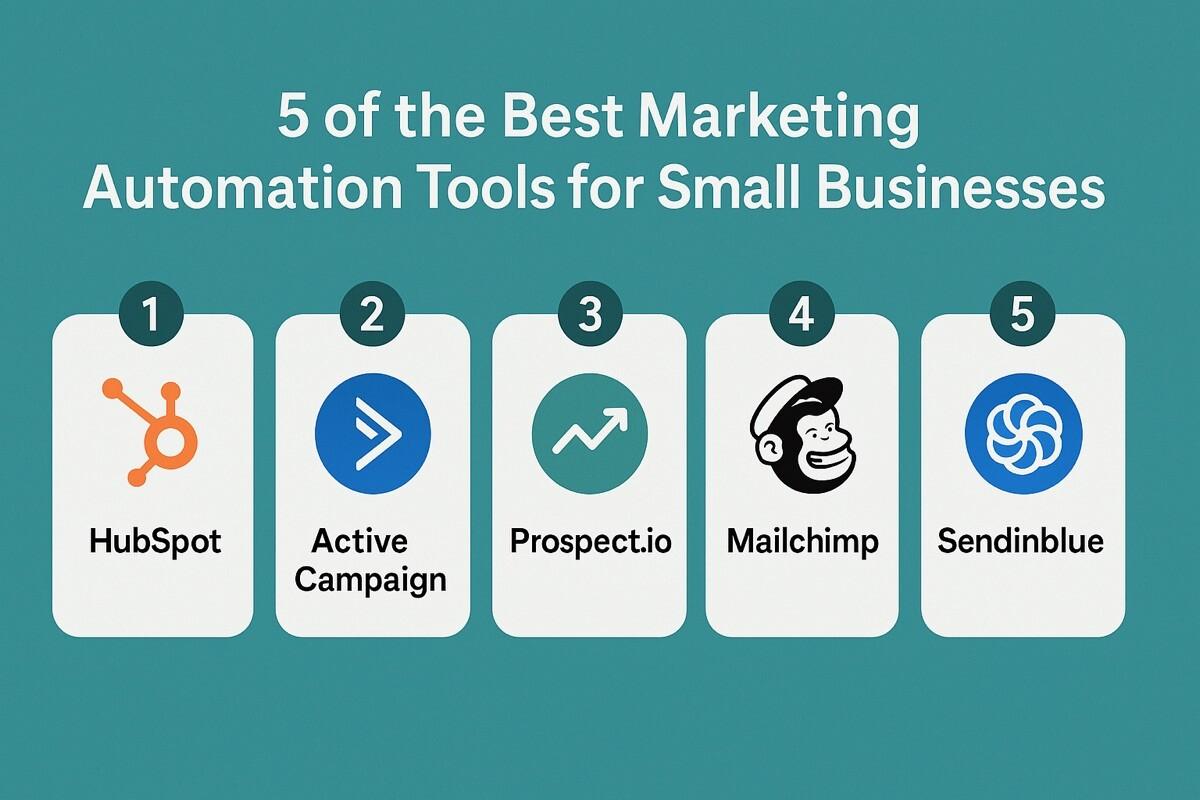When diving into AI builders for web design, the prompts you choose can make or break your project. Want stunning results? Ask for clarity and creativity. Avoid vague requests—they can lead to bland designs. Let’s explore the best (and worst) prompts to elevate your website!
The Best (and Worst) Prompts for Web Design in AI Builders
Are you diving into the world of AI builders for web design? If so, you’re not alone! As more designers and businesses turn to artificial intelligence for creating stunning websites, the right prompts can make all the difference. But here’s the catch: not all prompts are created equal. Some can unlock the full potential of these AI tools, while others might leave you scratching your head in frustration. In this article, we’ll explore the best and worst prompts you can use when working with AI web design builders. Whether you’re a seasoned pro or just starting out, getting these prompts right can save you time, enhance creativity, and lead to a website that truly reflects your vision. Let’s dive in and discover how to make your AI experience as smooth and rewarding as possible!
The Power of Prompts in AI Web Design
In the realm of AI web design, prompts function as the catalysts that turn vague ideas into stunning visual realities. A well-crafted prompt can unlock the full potential of AI builders, guiding them to create websites that are not only functional but also visually appealing. However, the nuances of what makes a prompt effective can be subtle yet powerful. Understanding the difference between prompts that lead to delightful designs and those that result in frustrating outcomes is key for anyone looking to harness AI in web development.
Effective prompts share several characteristics that can make or break your design experience:
- Clarity: Be specific about what you want. Instead of saying “Create a website,” try “Design a portfolio website for a freelance graphic designer with a modern aesthetic.”
- Context: Provide background information to help the AI understand the intended audience. For example, “This website is for young professionals looking for creative inspiration.”
- Style Guidelines: Specify any style preferences, such as color schemes or typography. Mention if you want a minimalistic look or a vibrant, eclectic design.
- Functionality: Outline essential features like contact forms, galleries, or e-commerce capabilities to ensure the design meets your needs.
Conversely, poorly structured prompts can lead to lackluster designs that miss the mark. Here are some examples of prompts to avoid:
- Vague requests: “Make it look nice.” This doesn’t provide any direction and can result in a design that feels generic.
- Overly complex instructions: “Create a website that does everything from booking appointments to selling products, and includes a blog.” Too many features can overwhelm the AI and lead to a cluttered design.
- Ignoring audience: Neglecting to specify who the website is for can result in designs that don’t resonate with users, making them ineffective.
To illustrate how prompts can shape design outcomes, consider the following table that compares effective and ineffective prompts:
| Effective Prompts | Ineffective Prompts |
|---|---|
| “Design a sleek e-commerce site for eco-friendly products aimed at millennials.” | “Create a website.” |
| “Build a blog for travel enthusiasts with vibrant images and easy navigation.” | “Make a blog.” |
| “Create a landing page with a call-to-action for a new fitness app.” | “Design something about fitness.” |
cannot be overstated. They serve as the foundation upon which great designs are built. By providing clear, concise, and context-rich instructions, you enable AI builders to work their magic, resulting in websites that truly reflect your vision. On the flip side, neglecting to formulate thoughtful prompts can lead to wasted time and unsatisfactory results. So, whether you’re a seasoned designer or just starting, embracing the art of prompt crafting is essential for your success in the world of AI web design.
Understanding What Makes a Great Prompt
Crafting an effective prompt for AI builders in web design is an art that can significantly enhance the results you achieve. A great prompt serves as a roadmap, guiding the AI to produce outcomes that align with your vision. Here are some key elements that contribute to the effectiveness of a prompt:
- Clarity: Your prompt should be straightforward and easy to understand. Avoid ambiguity to ensure the AI interprets your request accurately.
- Specificity: Include details that narrow down the focus. Instead of saying “design a website,” specify “create a minimalist portfolio site for a graphic designer.”
- Context: Provide background information that might inform the AI’s design choices. Mention your target audience, brand colors, or existing branding elements.
- Examples: Incorporate references to existing sites or styles you admire. This can help the AI grasp your aesthetic preferences more effectively.
- Iterative Feedback: Use iterative prompts that build on previous outputs. This can refine the design progressively, aligning it more closely with your expectations.
To illustrate how different prompts can yield varying results, let’s take a look at a simple comparison:
| Prompt Type | Outcome |
|---|---|
| Generic Prompt: “Create a website.” | Vague designs with no clear direction or theme. |
| Detailed Prompt: “Design a vibrant e-commerce site for handmade jewelry, featuring a pastel color palette and user-friendly navigation.” | Well-structured layout that resonates with the target demographic and aesthetics. |
Additionally, recognizing what to avoid can be equally important. Here are some common pitfalls that can result in ineffective prompts:
- Overly Complex Language: Using jargon or complex sentences can confuse the AI. Keep it simple!
- Lack of Direction: Failing to specify the type of website or its purpose may lead to generic outcomes.
- Ignoring User Experience: Consider the end user in your prompts; neglecting their journey can result in unsatisfactory designs.
By understanding these principles, you can harness the full potential of AI in your web design projects. A well-crafted prompt is not just a request; it’s an invitation for the AI to collaborate with you, interpreting your ideas and transforming them into visually stunning realities. So take the time to refine your prompts, and watch as your web design visions come to life!
Common Pitfalls: What to Avoid When Crafting Prompts
When it comes to crafting prompts for AI-driven web design tools, there are certain common pitfalls that can derail your efforts. Avoiding these missteps is crucial to harnessing the full potential of these technologies. Let’s dive into some key areas to keep in mind.
Ambiguity is the enemy. If your prompt lacks clarity, the AI will struggle to deliver results that meet your expectations. Be specific about the design elements you want. Instead of saying “create a website,” try “design a responsive portfolio website for a graphic designer with a minimalistic aesthetic.” This specificity guides the AI effectively.
Another common mistake is overloading your prompt with too many instructions. While it’s tempting to include every detail, a complex prompt can confuse the AI, leading to unsatisfactory outcomes. Instead, break down your requirements into manageable parts. Focus on the primary objectives first, then refine the design iteratively.
Neglecting the target audience can also lead to missed opportunities. Every design should resonate with its intended users, so make sure your prompts reflect this. Ask yourself: Who will use this site? What are their preferences? For example, for a children’s education site, prompt the AI to incorporate vibrant colors and interactive elements that appeal to younger audiences.
It’s equally important to avoid using jargon or overly technical terms without context. While the AI can understand a lot, not everyone has the same background knowledge. Instead of saying “utilize a parallax scrolling effect,” say “create a visually engaging homepage where background images move at a different speed than the text.” This keeps your prompts accessible and clear.
consider the tone and style of your prompt. Using a conversational tone can help convey your vision more effectively. Remember, you want the AI to act as a collaborator rather than just a tool. A prompt like “Imagine a cozy, welcoming website for a local bakery that invites visitors to indulge” can inspire more creative outcomes than a dry, technical directive.
| Common Pitfalls | Impact | Solution |
|---|---|---|
| Ambiguity | Unclear results | Be specific |
| Overloading prompts | Confused AI | Simplify instructions |
| Ignoring target audience | Missed relevance | Identify user needs |
| Using jargon | Inaccessible prompts | Use clear language |
| Lack of tone | Uninspired designs | Adopt a collaborative tone |
The Best Examples of Effective Prompts in Action
When it comes to harnessing the power of AI builders for web design, the right prompt can make all the difference. An effective prompt not only guides the AI to produce relevant designs but also sparks creativity and innovation. Here are some stellar examples of prompts that have proven to be effective in real-world applications:
- “Create a minimalist landing page for a vegan restaurant with a focus on sustainability.” This prompt encourages the AI to consider both aesthetic and thematic elements, producing a design that aligns with contemporary values.
- “Design a mobile app interface for a fitness tracker that highlights user progress and achievements.” By specifying the target platform and key features, this prompt yields user-centered designs that enhance usability.
- “Generate an e-commerce website layout for handmade jewelry, emphasizing elegance and craftsmanship.” This kind of prompt allows the AI to focus on visual elements that resonate with the target market, resulting in a compelling shopping experience.
On the flip side, some prompts leave much to be desired. Vague or overly complex instructions can confuse the AI, leading to uninspired designs. Here are a few examples of less effective prompts:
- “Make a website.” Without any context or direction, this prompt results in generic templates that lack personality.
- “Design something cool.” This open-ended request provides no guidance on what “cool” means, leading to inconsistent outputs.
- “Create a homepage.” Again, without specifying industry or style, the output may lack relevance to the intended audience.
To further illustrate the impact of effective prompts, consider the following table highlighting the differences in outcomes based on prompt specificity:
| Prompt Type | Outcome | Design Focus |
|---|---|---|
| Effective Prompt | Targeted and relevant design | Specific theme, audience, and functionality |
| Ineffective Prompt | Generic and uninspired design | Lacks focus and clarity |
Crafting the perfect prompt is akin to providing a roadmap for your AI builder. By being clear about your goals, theme, and audience, you empower the AI to deliver exceptional results that resonate with users. Remember, the magic often lies in the details!
How to Tailor Prompts for Your Unique Brand Identity
When working with AI builders to create a web design that resonates with your brand, it’s crucial to tailor your prompts to reflect your unique identity. A well-crafted prompt can steer the AI towards generating designs that embody your brand’s voice, aesthetics, and values. Here are some key elements to consider when customizing your prompts:
- Define Your Brand Voice: Is your brand playful, professional, or perhaps a blend of both? Specify the tone you want the AI to replicate.
- Identify Core Values: Highlight what your brand stands for. Whether it’s sustainability, innovation, or luxury, make sure to weave these elements into your prompts.
- Use Visual References: If there are existing designs that inspire you, reference them. This can guide the AI in understanding the visual language you prefer.
Additionally, consider the audience you aim to attract. Your prompts should reflect not only your brand identity but also resonate with your target demographic. Here’s how to craft prompts that connect:
- Audience Insights: Provide details about your audience’s preferences, interests, and pain points. This will help the AI tailor designs that appeal directly to them.
- Desired Outcomes: Be clear about what you want to achieve with your web design. Whether it’s increasing sales, improving engagement, or showcasing a portfolio, state these goals in your prompt.
Moreover, the specificity of your prompt can significantly influence the design output. A vague prompt can lead to generic results, while a detailed one can yield highly tailored designs. Consider structuring your prompts with the following approach:
| Prompt Element | Description |
|---|---|
| Brand Colors | Include your brand color palette to guide the AI in color selection. |
| Key Features | List essential aspects your website must have, like contact forms or social media links. |
| Competitor Analysis | Mention competitors and what you like or dislike about their designs to steer the AI’s direction. |
don’t hesitate to iterate on your prompts. AI builders often learn from feedback, so refining your requests based on previous outputs can lead to better results over time. Experiment with different prompt structures and see what resonates best with your brand identity.

Maximizing Creativity: Encouraging AI to Think Outside the Box
When it comes to harnessing the full potential of AI in web design, the prompts we use can make all the difference. The right prompts can inspire AI to generate innovative layouts, stunning color palettes, and engaging user experiences. However, it’s essential to understand that not all prompts are created equal. Here’s a look at some effective strategies to encourage AI to think outside the box and truly maximize creativity.
- Embrace Open-Ended Questions: Instead of asking the AI for a specific outcome, try posing open-ended questions that invite exploration. For example, “What unique features can enhance user interaction on a landing page?” allows the AI to generate a wider range of ideas.
- Leverage Contextual Prompts: Providing context can lead to more relevant and creative results. Instead of a generic “design a website,” you might say, “Design a website for a futuristic art gallery that immerses visitors in a digital experience.” This context fuels creativity and innovation.
- Incorporate User Personas: Define specific user personas to help the AI tailor its designs. Asking the AI to create a design for “tech-savvy millennials” versus “seniors seeking user-friendly experiences“ can yield dramatically different results.
- Encourage Diverse Inspirations: Suggest that the AI draw inspiration from various sources. For instance, “Create a website design inspired by nature, modern art, and vintage aesthetics” can lead to a unique blending of styles.
On the flip side, there are definitely prompts to avoid. Oversimplified or overly specific prompts often stifle creativity and lead to uninspired results. Here’s what to steer clear of:
| Prompt Type | Why to Avoid |
|---|---|
| “Make a website for a coffee shop.” | Too vague; lacks direction for creativity. |
| “Design a page with a blue background.” | Too specific; limits creative possibilities. |
| “Create a standard e-commerce layout.” | Repetitive; doesn’t push for innovation. |
By crafting thoughtful and imaginative prompts, you can unlock a world of creativity with AI web design builders. The goal is not just to create functional websites but to explore fresh, dynamic ideas that resonate with users and stand out in a crowded digital landscape.
Testing and Iterating: Refining Your Prompts for Optimal Results
When it comes to web design using AI builders, the importance of testing and iterating your prompts cannot be overstated. A well-crafted prompt can lead to stunning designs, while a poorly structured one can result in frustrating outputs. The key is to approach your prompts as living entities that can be refined and improved over time. Here’s how to get the most out of your AI builder experience.
First and foremost, start with clear and specific prompts. Here are a few strategies to consider:
- Be Descriptive: Instead of saying “Create a website,” say “Design a modern portfolio website for a photographer, featuring a gallery, about section, and contact form.”
- Use Examples: Provide examples of websites you admire. Mentioning specific design elements can guide the AI toward your vision.
- Iterate Based on Feedback: After generating a design, make notes on what you like and dislike. Use this feedback to adjust your next prompt.
Another critical aspect is the use of variables and parameters in your prompts. Tweaking certain parameters can lead to vastly different results. For instance, consider testing:
| Parameter | Example Values | Impact |
|---|---|---|
| Color Scheme | Bright, Pastel, Monochrome | Sets the mood and style of the design |
| Layout Type | Grid, Freeform, Classic | Affects the overall structure and flow |
| Font Style | Serif, Sans-Serif, Decorative | Influences readability and aesthetic |
Don’t shy away from experimenting with different styles and layouts. Each iteration provides an opportunity to refine your understanding of what works best for your brand. It’s also essential to track your tests and the results they yield, which can help pinpoint effective prompt structures.
remember that the journey toward the perfect web design is iterative. Keep an open mind, and consider that the most effective prompts often emerge from trial and error. Embrace the process and allow your creativity to guide you. With each iteration, you’ll find yourself getting closer to the design that truly resonates with your audience.

Transforming Feedback into Actionable Prompt Adjustments
When it comes to harnessing AI for web design, the effectiveness of your prompts can make or break your project. Understanding how to transform feedback into actionable adjustments is crucial for optimizing your prompts and achieving your desired results. By analyzing user interactions and design feedback, you can refine your prompt strategy to align more closely with your design goals.
Here are some strategies to consider when modifying your prompts:
- Iterate on Feedback: Gather feedback not just on the final output but also on the prompts themselves. Were they clear? Did they inspire creative solutions? Use this information to enhance your prompt structure.
- Experiment with Variations: Don’t hesitate to try different wording or structures in your prompts. A slight change in phrasing can lead to vastly different design outcomes.
- Focus on Specificity: General prompts might yield generic results. Being specific about your design needs can help the AI understand the nuances of your project better.
Furthermore, compiling a list of the best and worst prompts based on user experience can be invaluable. Here’s a simple comparison to illustrate which prompts tend to deliver superior results versus those that fall flat:
| Prompt Type | Effectiveness |
|---|---|
| Best Prompts | Specific, clear, and actionable requests that drive creativity and precision. |
| Worst Prompts | Vague or overly broad requests that leave too much room for interpretation. |
In addition to refining prompt language, it’s essential to develop a feedback loop within your design process. Encourage collaborators or clients to provide ongoing feedback as the design evolves. This real-time input can lead to immediate adjustments, which can be fed back into your prompt strategy. By integrating these insights, you can ensure that your prompts continually evolve to meet the needs of your project.
Lastly, remember that the transformation from feedback to actionable changes isn’t a one-time task. It’s an ongoing journey of learning and adapting. Stay open to new ideas, be willing to pivot based on what the AI generates, and embrace the iterative nature of design. The more you engage with your prompts and the feedback they yield, the more effective your AI-driven web design process will become.

Elevating User Experience through Thoughtful Prompt Design
In the realm of AI-driven web design, the success of your project hinges significantly on the prompts you use to guide the system. Thoughtful prompt design can enhance user experience by creating intuitive, engaging, and user-friendly interfaces. When crafted skillfully, prompts not only direct the AI’s focus but also foster creativity and streamline the design process.
To elevate user experience effectively, consider these key elements in your prompt design:
- Clarity: Ensure your prompts are clear and concise. Vague instructions can lead to undesired outcomes and frustration.
- Context: Give context where necessary. Providing background or specific goals helps the AI create more relevant designs.
- Flexibility: Design prompts that allow for creative variations. Rigid prompts can stifle innovation, while flexible ones encourage exploration.
Conversely, poorly designed prompts can significantly hinder the design journey. Here’s what to avoid:
- Ambiguity: Avoid prompts that leave too much open to interpretation. This can lead to results that miss the mark.
- Over-Specification: While details are vital, being overly specific can limit creativity and the AI’s ability to generate unique concepts.
- Neglecting User Needs: Failing to consider the end user’s perspective can result in designs that are aesthetically pleasing but functionally inadequate.
| Prompt Type | Examples | Effectiveness |
|---|---|---|
| Inspirational | “Create a homepage inspired by nature.” | High |
| Specific | “Make a button green and round.” | Medium |
| Vague | “Design something cool.” | Low |
Ultimately, the balance between guidance and freedom in your prompts is what leads to an exceptional user experience. When builders are equipped with the right prompts, they can unleash their creativity and produce designs that not only meet aesthetic standards but also resonate with users on a functional level. Crafting the perfect prompts is an art form that, when mastered, can transform the mundane into the extraordinary.

Final Thoughts on Navigating the AI Prompt Landscape for Web Design
As we wrap up our exploration of AI prompts in web design, it’s clear that the right prompts can make all the difference in enhancing creativity and efficiency. However, navigating this landscape requires a discerning eye and a willingness to experiment. Here are some key takeaways to consider:
- Understand Your Needs: Before diving into prompts, take a moment to define what you truly want from your web design. Are you looking for a sleek portfolio, an engaging e-commerce platform, or a robust blog? Knowing your objectives will guide your prompt selection.
- Be Specific: Vague prompts often lead to generic results. Instead of asking for “a good website,” try “a modern, minimalist portfolio site for a freelance graphic designer.” The more detailed your request, the better the output.
- Iterate and Refine: Don’t hesitate to tweak your prompts based on the responses you receive. AI is a collaborative tool—think of it as a conversation. If you don’t get the desired output, adjust your wording and try again.
- Embrace Creativity: Some of the best designs come from unexpected ideas. Use prompts that encourage creativity, like “suggest an innovative layout for a tech startup’s landing page” or “create a whimsical design for a children’s book website.”
While some prompts excel, others can lead to frustrating results. Here’s a quick comparison of effective and ineffective prompts:
| Effective Prompts | Ineffective Prompts |
|---|---|
| “Design a responsive website for a coffee shop that highlights its sustainability practices.” | “Make a website.” |
| “Create a landing page for an online course that incorporates testimonials and a clear call-to-action.” | “I want something nice.” |
| “Suggest color schemes and typography for a wellness blog.” | “Give me colors.” |
Ultimately, the journey through the AI prompt landscape is as much about learning as it is about design. The more you engage with AI tools, the better you’ll become at crafting prompts that yield inspiring results. So, take the plunge, experiment with different prompts, and watch your web design capabilities flourish.
Frequently Asked Questions (FAQ)
Q&A: The Best (and Worst) Prompts for Web Design in AI Builders
Q1: What are AI builders, and why are they important in web design?
A1: Great question! AI builders are tools that leverage artificial intelligence to help users create websites quickly and efficiently, even if they don’t have a background in coding or design. They are important because they democratize web design, making it accessible for everyone—from small business owners to hobbyists—enabling them to bring their ideas to life without needing extensive technical skills.
Q2: What makes a prompt effective for web design in AI builders?
A2: An effective prompt is clear, specific, and provides context. It should articulate your vision while leaving enough room for creativity. For example, instead of saying, “Create a website,” a better prompt might be, “Design a modern, minimalist e-commerce site for handmade jewelry, featuring a user-friendly shopping cart and vibrant product images.” This kind of detail helps the AI understand exactly what you’re looking for.
Q3: Can you give examples of some of the best prompts for AI web design?
A3: Absolutely! Here are a few standout prompts:
- “Create a responsive portfolio website for a freelance photographer that showcases high-resolution images and includes sections like About, Portfolio, and Contact.”
- “Design a blog for a food enthusiast with vibrant colors, featuring a recipe archive, search functionality, and social media integration.”
- “Develop a landing page for a nonprofit organization focusing on environmental conservation, highlighting their mission, upcoming events, and donation options.”
These prompts provide clarity and direction, enabling the AI to produce a website that aligns closely with your needs.
Q4: What about the worst prompts? What should we avoid?
A4: Poor prompts often lack clarity or are too vague. For instance:
- “Make a website.” This doesn’t communicate what kind of website you need, leading to generic results.
- “Create something cool.” What’s cool to you might not be cool to someone else—this is too subjective!
- “Design a page.” Without specifying the type of page or its purpose, the AI may miss the mark entirely.
Avoid prompts that don’t offer enough context, as they can lead to frustration and results that don’t meet your expectations.
Q5: How can I refine my prompts for better results?
A5: Refining your prompts is all about specificity! Start by:
- Defining your purpose: What do you want the website to achieve?
- Identifying your audience: Who will visit your site? Tailor your design to their preferences.
- Describing your desired style: Are you after modern, classic, minimalist, or something else? Use descriptive adjectives.
- Including key features: List the essential elements you want, like a blog, gallery, or e-commerce functionalities.
The more detailed you are, the better the AI can tailor its design to your vision.
Q6: Are there any other tips for using AI builders effectively?
A6: Definitely! Here are a few additional tips:
- Iterate and Experiment: Don’t hesitate to tweak your prompts based on the results you get. Try different variations!
- Learn from Examples: Look at websites you admire and analyze what makes them work. Use those insights to inspire your prompts.
- Engage with the AI: Sometimes, asking follow-up questions or requesting tweaks can lead to an even better result.
By adopting these strategies, you’ll harness the full potential of AI builders and create a website that truly reflects your vision!
Q7: Why invest time in crafting the right prompts?
A7: Investing time in crafting the right prompts can save you from frustration and wasted time down the line. It’s all about efficiency and effectiveness! A well-thought-out prompt can lead to designs that feel tailored to your brand, resonate with your audience, and ultimately help you achieve your goals—whether that’s boosting sales, growing a community, or simply sharing your passion with the world. the right prompts can make all the difference in your web design journey!
Future Outlook
As we wrap up our exploration of the best and worst prompts for web design in AI builders, it’s clear that the right words can make all the difference in creating stunning, effective websites. Remember, the art of crafting prompts is not just about getting a result; it’s about engaging with the technology in a way that unleashes its full potential.
The best prompts will guide AI to understand your vision, enhancing creativity and efficiency. On the flip side, the wrong ones can lead you down a path of frustration and subpar outcomes. So, take these insights with you as you embark on your web design journey. Experiment, iterate, and don’t be afraid to tweak your prompts until you find that sweet spot.
Ultimately, the goal is to harness AI as a powerful ally in your design process. With the right approach, you can create beautiful, functional websites that not only meet your needs but also resonate with your audience. So go ahead, dive in, and let your creativity flow! Happy designing!





